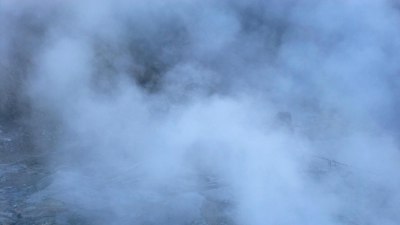The Connection Between Weather and Migraines
Explore how weather influences migraines and discover relief strategies.

This image was created with the assistance of Freepik
Migraines are a prevalent neurological condition that affects millions of people worldwide. While several factors can trigger a migraine attack, emerging evidence suggests that weather conditions play a significant role. This article delves into the intricate connections between weather patterns and migraine occurrence, exploring how changes in temperature, humidity, and atmospheric pressure can impact individuals who suffer from this debilitating condition.
Understanding Migraines
Migraines are often characterized by intense, recurring headaches that can last for hours or even days. They are frequently accompanied by symptoms such as nausea, vomiting, and heightened sensitivity to light and sound. Though the exact cause of migraines remains unclear, various triggers have been identified, including hormonal changes, stress, certain foods, and environmental factors.
The Role of Weather in Migraine Triggers
Weather changes have long been reported by migraine sufferers as a common trigger. Different weather elements, such as temperature, humidity, and barometric pressure, can affect the body in various ways that may lead to increased migraine activity. Understanding these elements helps establish a clear link between the environment and migraine onset.
Temperature Variations
Research indicates that both extreme heat and cold can trigger migraines. High temperatures often lead to dehydration, which is a well-known migraine trigger. Excessive heat can result in increased perspiration, leading to a loss of electrolytes and dehydration. On the other hand, cold weather can lead to changes in blood flow and trigger migraines in some individuals. Both temperature extremes present challenges for those susceptible to migraines.
Humidity Levels
Humidity is another critical weather factor that can influence migraines. High humidity levels can make it difficult for the body to cool itself, leading to discomfort, dehydration, and ultimately triggering migraines for some individuals. Conversely, low humidity can be equally problematic, often leading to dry air conditions, which can irritate sinuses and provoke headache symptoms.
Barometric Pressure Changes
Barometric pressure changes, which occur with incoming weather fronts or storms, have been cited by many migraine sufferers as a contributing factor to their headaches. A drop in barometric pressure, which often accompanies storms, can cause changes in the body’s pressure regulation, leading to migraine onset. Some research studies suggest that individuals sensitive to weather changes may experience a higher frequency of migraines during periods of fluctuating atmospheric pressure.
Seasonal Affects
Specific seasons can pose higher risks for migraine sufferers. For example, those who tend to experience migraines in the spring may be more sensitive to changing weather patterns as temperatures begin to rise and pollen counts increase. Similarly, fall weather changes can trigger migraine attacks for some individuals as weather patterns become unpredictable.
Chronic Migraine Sufferers and Weather Sensitivity
Individuals with chronic migraines may be more sensitive to weather changes than those who experience migraines infrequently. This heightened sensitivity can lead to an increased frequency of attacks during particular weather conditions. Those who track their migraines often report the occurrence of headaches correlating with specific weather patterns, suggesting that monitoring these elements over time may provide useful insights for managing their condition.
Strategies for Weather-Related Migraine Management
Given the connection between weather and migraines, employing effective management strategies can be beneficial for those susceptible to weather-induced attacks. Here are some suggested techniques for managing migraines triggered by changing weather conditions:
1. Maintain Hydration
Staying adequately hydrated is crucial, especially during hot and humid weather. Drinking plenty of water helps maintain proper bodily functions and can reduce the risk of dehydration-induced migraines. It is advisable to keep a water bottle handy and consume fluids regularly, especially during significant weather shifts.
2. Protect Against Temperature Extremes
When extreme heat or cold is expected, taking measures to protect yourself can help minimize exposure. Dress appropriately for the weather, and use air conditioning during excessively hot days to stay cool. Conversely, when temperatures drop, wearing layers can help keep the body warm and prevent any trigging effects.
3. Monitor Weather Changes
Keeping an eye on the weather forecast can help prepare for sudden changes in conditions that may trigger migraines. Many migraine sufferers utilize apps or resources that provide real-time updates on weather changes, allowing them to anticipate potential triggers and take preemptive measures.
4. Maintain a Migraine Diary
Documenting migraine occurrences alongside weather conditions can help identify specific triggers. By maintaining a migraine diary, individuals can possibly find patterns related to weather conditions, helping them to predict and manage attacks more effectively. This self-monitoring can pave the way for better strategies and treatments.
5. Medication Management
For those with frequent migraines, speaking with a healthcare professional about medication management is essential. Medications that prevent migraines or help relieve symptoms when they occur can be crucial, especially during identifiable weather change periods. Discussing specific triggers with a doctor can lead to targeted treatment options based on individual sensitivities.
The relationship between weather and migraines is a complex yet significant aspect of understanding this neurological condition. By acknowledging the effects of various weather elements, individuals can develop tailored strategies to mitigate the impact of weather changes on their migraine frequency and intensity. From maintaining proper hydration to monitoring forecast changes and tracking migraine diaries, there are numerous ways to combat weather-related triggers. For those afflicted with migraines, awareness, preparation, and communication with healthcare providers are vital parts of managing this challenging condition effectively.











